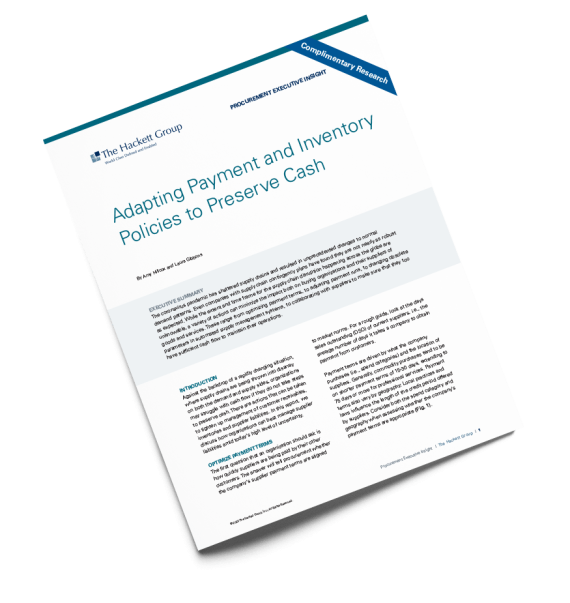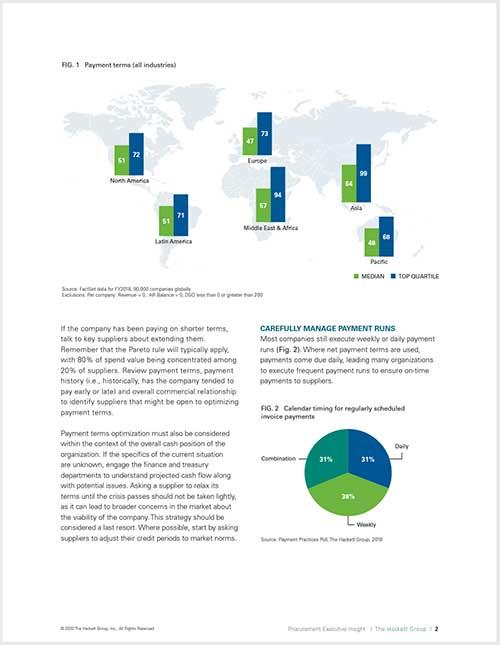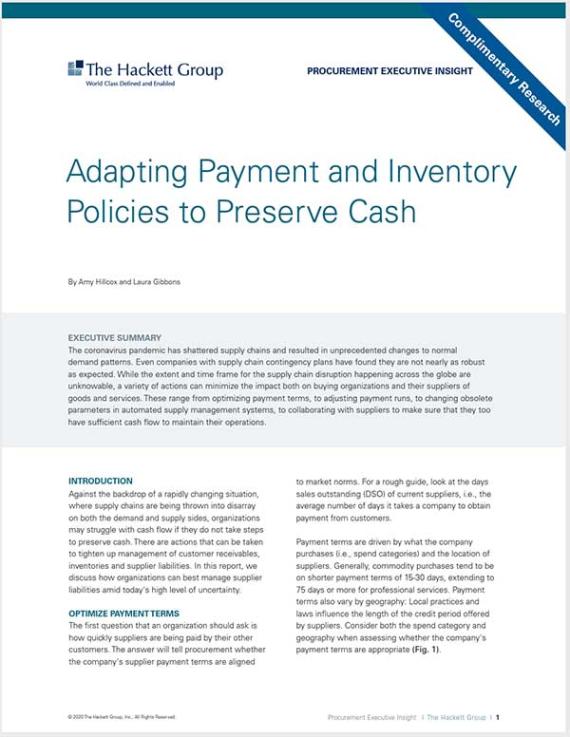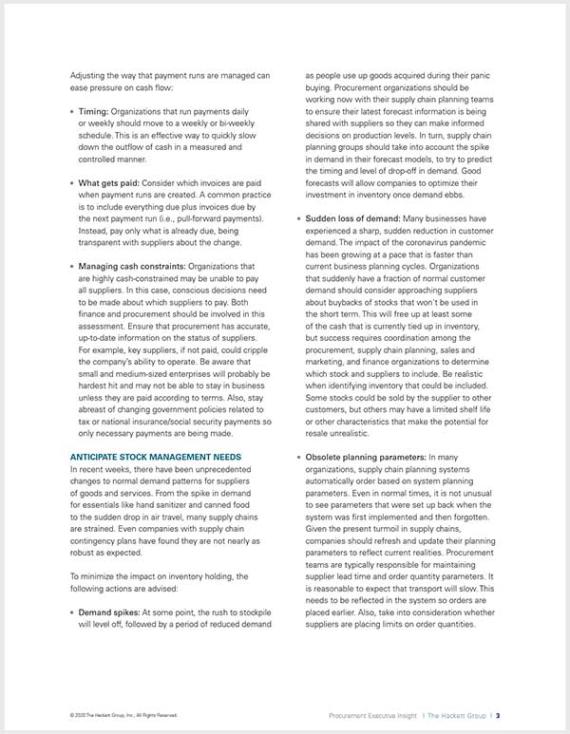Adapting Payments and Inventory to Protect Cash
It’s no secret that we are living in unprecedented times. In today’s landscape, a robust supply chain is essential when overcoming widespread disruption. And one of the biggest casualties affecting you and your suppliers is cash flow. Learn key steps that leading organizations are taking to protect cash and stabilize supply chains.
Uncover an agile approach to payments and protecting cash
Download this Hackett Group report to explore three ways you can safeguard cash:
- Extend payment terms. By how much? What should you look for before you extend?
- Change payment runs. Instead of daily or weekly, consider less frequent runs to ease the pressure on your organization’s cash flow.
- Anticipate demand. If spikes or slumps are impacting inventory, how can you ensure that you have a robust supply chain contingency plan to minimize the impact of inventory holding?
In a world of uncertainty and unpredictable demand spikes, organizations must become more agile. One key way to improve agility is to protect and optimize cash.
The Hackett Group surveyed nearly 100,000 companies to uncover how successful organizations are safeguarding cash by optimizing payment terms, managing payment runs, and anticipating stock management demand.


FAQ



